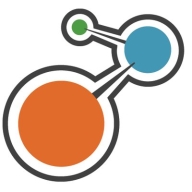

Active Risk Manager and StandardFusion GRC are competing products in the risk management and governance space. Active Risk Manager seems to have an upper hand due to its integration and scalability, suitable for larger enterprises, while StandardFusion GRC stands out for its intuitive functionality, appealing to small to mid-sized companies.
Features: Active Risk Manager includes risk assessment capabilities, integration with existing enterprise systems, and an extensive risk framework. StandardFusion GRC offers workflow automation, incident management, and streamlined GRC processes prioritizing user accessibility.
Ease of Deployment and Customer Service: Active Risk Manager provides a robust deployment model with customization options, but longer deployment times. StandardFusion GRC offers a quicker cloud-based deployment. StandardFusion provides responsive support for smoother transitions.
Pricing and ROI: Active Risk Manager’s higher setup cost is justified by its expansive features and integration potential for large enterprises. StandardFusion GRC has competitive pricing and lower setup costs, appealing to cost-conscious organizations seeking quick ROI.
Active Risk Manager offers comprehensive risk management solutions tailored to knowledgeable professionals. It provides a structured platform to identify, assess, manage, and report risks effectively, enhancing decision-making and operational resilience.
Active Risk Manager addresses diverse business challenges with its robust features, supporting businesses in mitigating potential risks and maximizing opportunities. Known for its adaptability, it integrates seamlessly into business processes, helping organizations navigate complex risk landscapes. With its focus on proactive risk management, Active Risk Manager ensures that companies can anticipate and adapt to changing risks, thereby safeguarding their strategic objectives and daily operations.
What are the most important features of Active Risk Manager?Active Risk Manager is applied across industries like finance, healthcare, and manufacturing, where it supports compliance and risk mitigation efforts. In finance, it helps manage strategic and operational risks, while healthcare uses it to address patient safety and data protection concerns. Manufacturing relies on it to ensure safety and supply chain resilience.
StandardFusion GRC enables organizations to effectively manage risk, compliance, and governance activities within an integrated platform. It assists businesses in aligning their processes with regulatory standards while minimizing risks and reducing inefficiencies.
Designed for enterprises seeking robust GRC management, StandardFusion GRC is recognized for its comprehensive capabilities in simplifying complex procedures. It facilitates seamless risk assessment, audit management, and compliance tracking, ensuring all critical aspects are covered. Tailored to support organizations in maintaining regulatory alignment, it aids in streamlining workflows, increasing productivity, and providing a clear overview of risk landscapes. Its adaptable architecture makes it suitable for varied compliance requirements.
What features stand out in StandardFusion GRC?In industries like finance, healthcare, and technology, StandardFusion GRC is implemented to meet stringent compliance demands. Financial institutions rely on its robust risk management capabilities, while healthcare sectors utilize its compliance tracking features to adhere to medical regulations. Technology companies appreciate its flexibility in handling a wide range of regulatory requirements.
We monitor all GRC reviews to prevent fraudulent reviews and keep review quality high. We do not post reviews by company employees or direct competitors. We validate each review for authenticity via cross-reference with LinkedIn, and personal follow-up with the reviewer when necessary.